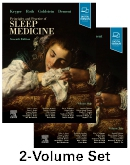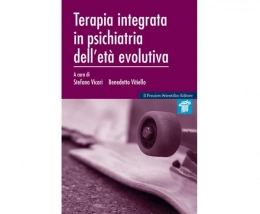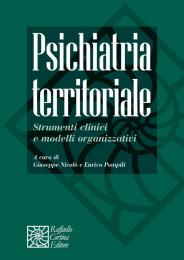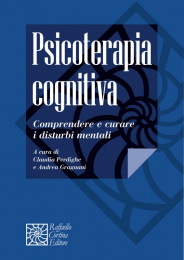Non ci sono recensioni
DA SCONTARE
Offering today’s most authoritative, comprehensive coverage of sleep disorders, Kryger’s Principles and Practice of Sleep Medicine, 7th Edition, is a must-have resource for sleep medicine specialists, fellows, trainees, and technicians, as well as pulmonologists, neurologists, and other clinicians who see patients with sleep-related issues. It provides a solid understanding of underlying basic science as well as complete coverage of emerging advances in management and treatment for a widely diverse patient population. Evidence-based content, hundreds of full-color illustrations, and a wealth of additional resources online help you make well-informed clinical decisions and offer your patients the best possible care.
1 Normal Sleep and Its Variants
1. History of Sleep Physiology and Medicine
2. Normal Human Sleep: An Overview
3. Normal Aging
4. Daytime Sleepiness and Alertness
5. Sleep Deprivation
2 Sleep Mechanisms and Phylogeny
6. Introduction/Defining Sleep
7. Neural Control of Sleep in Mamma Is
8. Rapid Eye Movement Sleep Control and Function
9. Deep-Brain Imaging of Brain Neurons and Glia during Sleep
10. Evolution of Mammalian Sleep
11. Sleep in Nonmammalian Vertebrates
3 Genetics and Genomic Basis of Sleep
12. Introduction: Genetics and Genomics of Sleep
13. Genetics and Genomics of Circadian Clocks
14. Genetics and Genomic Basis of Sleep in Simple Model Organisms
15. Genetic and Genomic Basis of Sleep in Rodents
16. Genetics and Genomic Basis of Sleep in Healthy Humans
17. Genetics and Genomic Basis of Sleep Disorders in Humans
4 Physiology in Sleep
18. Introduction to Physiology in Sleep
19. What Neuroimaging Reveals about the Brain Areas Generating, Maintaining, and Regulating Sleep
20. Cardiovascular Physiology and Coupling with Respiration: Central and Autonomic Regulation
21. Cardiovascular Physiology: Autonomic Control in Health and in Sleep Disorders
22. Respiratory Physiology. Central Neural Control of Respiratory Neurons and Motoneurons during Sleep
23. Respiratory Physiology Understanding the Control of Ventilation
24. Physiology of Upper and lower Airways
25. 5 Respiratory Physiology Sleep at High Altitude
26. Sleep and Host Defense
27. Endocrine Physiology in Relation to Sleep and Sleep Disturbances
28. Thermoregulation in Sleep and Hibernation
29. Memory Processing in Relation to Sleep
30. Sensory and Motor Processing during Sleep and Wakefulness
31. Local and Use-Dependent Aspects of Sleep
32. Pathophysiology of Sleep-Wake Disturbances after Traumatic Brain Injury
5 Chronobiology
33. Introduction
34. Master Circadian Clock and Master Circadian Rhythm
35. Anatomy of the Mammalian Circadian Sys tern
36. Physiology of the Mammalian Circadian System
37. Human Circadian Timing System and Sleep-Wake Regulation
38. Sleep Homeostasis and Models of Sleep Regulation
39. Circadian Rhythms in Sleepiness, Alertness, and Performance
40. Central and Peripheral Circadian Clocks
41. Circadian Dysregulation and Cardiometabolic and Immune Health
42. Circadian Dysregulation in Brain Aging and Neuropsychiatrie Health
43. Circadian Disorders of the Sleep-Wake Cycle
6 Pharmacology
44. Introduction
45. Adenosinergic Control of Sleep
46. Catecholamines
47. GABA: Its Metabolism, Receptors, and the Drugs for Treating Insomnias and Hypersomnias
48. Histamine
49. Orexin/Hypocretin
50. Serotonin and Sleep
51. Melatonin
52. Opioid Actions on Sleep and Breathing
53. Clinical Pharmacology of Drugs that Affect Sleep and Wake
7 Psychobiology and Dreaming
54. Introduction
55. Why We Dream
56. Dream Content: Quantitative Findings
57. Neural Correlates of Dreaming
58. The Neurobiology of Dreaming
59. Lucid Dreaming
60. What Is the Function of Nightmares?
61. Dreams and Nightmares in Posttraumatic Stress Disorder
62. Incorporation of Waking Experiences into Dreams
63. Emotion, Motivation, and Reward in Relation to Dreaming
64. Dreaming during Pregnancy
8 Impact, Presentation, and Diagnosis
65. Approach to the Patient with Disordered Sleep
66. Cardinal Manifestations of Sleep Disorders
67. Physical Examination in Sleep Medicine
68. Clinical Tools and Tests in Sleep Medicine
69. Classification of Sleep Disorders
70. Epidemiology of Sleep Medicine
71. Sleep Medicine, Public Policy, and Public Health
9 Legal Aspects of Sleep Medicine
72. Introduction
73. Sleep Forensics: Criminal Culpability for Sleep-Related Violence
74. Legal Obligations of Persons Who Have Sleep Disorders or Who Treat or Hire Them
75. Legal Aspects of Fatigue- and Safety-Sensitive Professions
76. Sleep Medicine Clinical Practice and Compliance- United States
77. Sleep Medicine Clinical Practice and Compliance-Europe
10 Occupational Sleep Medicine
78. Introduction
79. Performance Deficits During Sleep Loss and Their Operational Consequences
80. Sleep and Sleep Disorders in Operational Settings
81. Shift Work, Shift-Work Disorder, Jet Lag. and Jet Lag Disorder
82. Fatigue Countermeasures
83. Sleep, Sleepiness, and Performance Prediction Modeling
84. Fatigue RiskManagemen f Systems
85. Safety Cases and Assessing Alternative Means of Regulatory Compliance in Fatigue RiskManagemenf
86. Fatigue Proofing
87. Sleep Health in Athlete Populations: Unique Challenges and Practical Solutions
88. Assessment of the Occupational Sleep Medicine Field
11 Insomnia
89. Advances in Insomnia Pathophysiology and Treatment: An Introduction
90. Insomnia: Epidemiology, Risk Factors, and Health Disparities
91. Etiology and Pathophysiology of Insomnia
92. Pediatric Insomnia and Its Developmental Trajectories
93. Insomnia Diagnosis, Assessment, and Evaluation
94. Insomnia with Short Sleep Duration and Multidimensional Sleep Health
95. Behavioral Treatment I: Therapeutic Approaches and Implementation
96. Behavioral Treatment II: Efficacy, Effectiveness, and Dissemination
97. Behavioral Treatment III: Digital and Telehealth Approaches
98. Pharmacologic Treatment I: Therapeutic Approaches and Implementation
99. Pharmacologic Treatment II: Efficacy, Effectiveness, and Contraindications
100. Pharmacologic Treatment III: Sequenced and Combined Psychologic and Pharmacologic Treatments for Insomnia
12 Neurologic Disorders
101. Introduction
102. Parkinsonism
103. Sleep-Wake Disturbances and Stroke
104. Sleep and Neuromuscular Diseases
105. Alzheimer Disease and Other Demen tias
106. Epilepsy, Sleep, and Sleep Disorders
107. Sleep and Headache
108. Sleep Disorders after Traumatic Brain Injury
109. Autoimmune Disorders (Autoimmune Encephalitides and Multiple Sclerosis)
13 Hypersomnias
110. Central Disorders of Hypersomnolence
111. Narcolepsy: Pathophysiology and Genetic Predisposition
112. Narcolepsy: Diagnosis and Management
113. Idiopathic Hypersomnia
114. Kleine-Levin Syndrome
14 Parasomnias
115. Parasomnias and Sleep-Related Movement Disorders: Overview and Approach
116. Disorders of Arousal
117. Sleep-Related Eating Disorder
118. Rapid Eye Movement Sleep Parasomnias
119. Nightmares and Dream Disturbances
120. Other Parasomnias
121. Restless Legs Syndrome /Willis-Ekbom Disease) and Periodic Limb Movements during Sleep
122. Sleep-Related Movement Disorders and Their Unique Motor Manifestations
15 Sleep Breathing Disorders
123. Introduction
124. Central Sleep Apnea: Definitions, Pathophysiology, Genetics, and Epidemiology
125. Central Sleep Apnea: Diagnosis and Management
126. Anatomy and Physiology of Upper Airway Obstruction
127. Snoring and Pathologic Upper Airway Resistance Syndromes
128. Obstructive Sleep Apnea: Heritable Phenotypes and Genetics
129. Deep Phenotyping of Sleep Apnea
130. Clinical and Physiologic Heterogeneity of Obstructive Sleep Apnea
131. Obstructive Sleep Apnea: Clinical Features, Evaluation, and Principles of Management
132. Positive Airway Pressure Treatment for Obstructive Sleep Apnea
133. Pharmacologic Treatments for Obstructive Sleep Apnea
134. Alternative Strategies to Management of Sleep-Disordered Breathing
135. Brain Health in Sleep Apnea: Cognition, Performance, Mechanisms, and Treatment
136. Obstructive Sleep Apnea and Metabolic Disorders
137. Overlap Syndromes of Sleep and Breathing Disorders
138. Obesity-Hypoventilation Syndrome
139. Obstructive Sleep Apnea, Obesity, and Bariatric Surgery
140. Advanced Modes of Positive Pressure Therapy for Sleep-Disordered Breathing
141. Sleep and Breathing at High Altitude
142. Evolution of Sleep-Disordered Breathing across the Adult Years
16 Cardiovascular Disorders
143. Introduction
144. Sleep-Related Cardiac Risk
145. Cardiac A rrhythmogenesis during Sleep: Mechanisms, Diagnosis, and Therapy
146. Cardiovascular Effects of Sleep-Related Breathing Disorders
147. Systemic and Pulmonary Hypertension in Obstructive Sleep Apnea
148. Coronary Artery Disease and Obstructive Sleep Apnea
149. Heart Failure
150. Sleep-Disordered Breathing and Stroke
151. Insomnia and Cardiovascular Disease
17 Other Medical Disorders
152. Introduction
153. Sleep and Cancer across the Life Span
154. Fibromyalgia and Chronic Fatigue Syndromes
155. Endocrine Disorders
156. Pain and Sleep
157. Sleep and Chronic Kidney Disease
158. Sleep in the Critically III Patient
159. Perioperative Sleep Medicine
160. Sleep and Gastrointestinal Health
18 Psychiatric Disorders
161. Introduction
162. Emotion and Sleep
163. Anxiety Disorders and Posttraumatic Stress Disorder
164. Affearve Disorders
165. Schizophrenia and Sleep
166. Substance Abuse
19 Dentistry and Otorhinolaryngology
167. Dentistry and Otorhinolaryngology in Sleep Medicine: Below the BraiAtttpd Above the Larynx
168. Oronasopharyngeal Growth and Malformations with Orthodontic Management
169. Sleep Bruxism: Definition, Prevalence, Classification, Etiology, and Consequences
170. Assessment of Sleep Bruxism
171. Management of Sleep Bruxism: Psychological, DentaL and Medical Approaches in Adults
172. Orofacial Pain/Temporomandibular Disorders in Relation to Sleep Bruxism and Breathing Disorders
173. Oral Appliances for the Treatment of Sleep-Disordered Breathing
174. Anesthesia in Upper Airway Surgery
175. Upper Airway Surgery to Treat Obstructive Sleep- Disordered Breathing
176. Pharmacotherapy and Behavioral Complementary, and Alternative Medicine for Sleep Bruxism
20 From Childhood to Adulthood
177. Overview: Transition from Pediatric-Oriented to Adult-Oriented Health Care in Sleep Medicine
178. Sleep-Related Breathing Disorders in Children
179. Neuromuscular and Neurological Disorders
180. Transitional Care for Adolescents with Narcolepsy and Other Central Disorders of Hypersomnolence
181. Congenital Heart Disease
182. Sleep in Intersex and Transgender Individuals
21 Sleep in Women
183. Introduction
184. Sex Effects and Differences in Circadian Rhythms and Sleep
185. The Menstrual Cycle, Sleep, and Circadian Rhythms
186. Sleep and Sleep Disorders Associated with Pregnancy
187. Sleep-Disordered Breathing in Pregnancy
188. Postpartum Period and Early Parenthood
189. Sleep and Menopause
22 Sleep Medicine in the Elderly
190. Introduction
191. Psychiatric and Medical Comorbidities and E ffects oiMedications in Older Adults
192. Obstructive Sleep Apnea in Older Adults
193. Insomnia in Older Adults
194. Orcadian Rhythms in Older Adults
195. Sleep in Long-Term Care Settings
23 Methodology
196. Section Introduction: Polysomnography and Beyond
197. Sleep Stage Scoring
198. Central Nervous System Arousals and the Cyclic Alternating Pattern
199. Neurologic Monitoring Techniques
200. Monitoring Techniques for Evaluating Suspected Sleep-Related Breathing and Cardiovascular Disorders
201. Sleep Telemedicine and Remote PAP Adherence Monitoring
202. Cardiopulmonary Coupling
203. Pulse Wave Analysis
204. Recording and Scoring Sleep-Related Movements
205. Home Sleep Testing for Sleep-Related Breathing Disorders
206. Consumer Sleep Tracking: Landscape and CTA/ANSI Performance Standards
207. Evaluating Sleepiness and Fatigue
208. The Assessment of Insomnia
209. Surveys, Sampling, and Polling Methods for Sleep and Public Health
210. Techniques for Clinical Assessment of Circadian Rhythm Disorders
211. Actigraphy Methods and Technical Issues
212. Imaging
213. COVID-19 and Sleep




